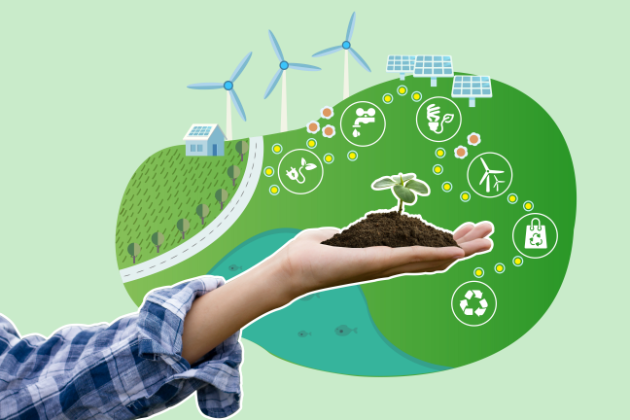Environmental and social responsibility in a time of great technological opportunity
06 November 2023

The growing public call for climate change action has led to an increased expectation for businesses to accelerate their efforts to work towards net zero to preserve the earth’s resources. Computer science – particularly artificial intelligence (AI) - is shaping how we think about and implement these sustainable solutions, from smart transport systems designed to reduce emissions to optimising renewable energy deployment, allowing businesses to make sustainable choices based on empirical evidence. Rather than how - the question is fast becoming - how fast can technological innovation take us towards our sustainable goals?
As governments and business raise their commitments towards achieving environmental goals, demand for green skills is on the rise. It is estimated by the International Labor Organization (ILO) that 24 million jobs could be created by the green economy by 2030, with the UK government stating its ambition to create two million jobs in the green economy by this date. This presents the opportunity for young people to get involved in driving the UK towards net zero – whilst also presenting us with a challenge around talent supply. The 2021 Green Jobs Taskforce report details the need for a collaborative approach from industry and the education sector across all stages of the green jobs life cycle in order to build proficiency for the future.
However, while on one hand the technology sector has an important role to play in creating solutions to environmental issues, it also has a social responsibility to mitigate its own digital footprint. According to the UN, the industry currently accounts for approximately 2-3% of total global emissions, and this is increasing. For some of the world’s biggest technology companies, the need to responsibly pave the way forward has created positive competition. Amazon, Facebook, Apple and Google, for example, have all developed ambitious goals for cutting their climate emissions, with some already declaring themselves to be carbon neutral.
A good example of a collaborative initiative designed to reduce digital emissions is DIMPACT. Backed by leading media and technology companies and developed by computer scientists at the University of Bristol, the online tool is used to calculate and reduce the emissions of digital media and entertainment products. The information it provides helps participating companies to make informed decisions to reduce the overall carbon footprint of their digital services. In an ever-evolving digital landscape, innovative projects like this illustrate how computer science can simplify processes in order to create sustainable impact.
AI - possibility or peril?
Its potential may be indisputable, but some industry experts believe the dangers it poses to humanity are just as serious as the climate crisis, with both requiring international action. Whilst by contrast, AI is also lauded as one of the most powerful tools at our disposal to help tackle environmental issues, with the United Nations Environment Program citing the field as key to shaping our understanding of the environmental impact and effects of climate change. However, whether or not we perceive the threat of AI to be on a similar level to climate change, can industry realistically balance the competing demands required to tackle both?
After hosting last week’s inaugural AI Safety Summit, attended by international representatives from government and industry, the UK has positioned itself as a global leader in driving a collaborative approach to the safety and regulation of future AI technologies. The event provided a platform for the UK and US to announce the establishment of new national AI safety institutes designed to test and mitigate the risks of advanced AI, both of which will share expertise and intelligence. This signals an important step to building public trust in AI whilst still acknowledging the vast potential it offers society to help us create solutions to global challenges like climate change.
Resources for the classroom
This is a jam-packed period in the STEM awareness calendar, with Green Careers week running 6 to 11 November, World STEM Day on 8 November and Tomorrow’s Engineers Week from 6 to 10 November. Why not make the most of some inspiring resources (which you can also use all year round) to inspire your lesson planning and help shape the innovators of the future?
- Green Careers week : help young people understand the breadth of opportunities within the green careers sector with videos, case studies, activities, and resources to use in your classroom.
- Isaac Computer Science journeys: use our interview series to support your students to learn from passionate educators and computer scientists doing incredible things in diverse computing-related fields.
- Computing Ambassadors: invite a volunteer Ambassador into your classroom to connect computing lessons to real-world careers.
- Tomorrow’s Engineers Week: provide real-life examples of STEM careers by accessing videos of Engineers on a Mission who are working to make the world a better place.
About the author
Nicola Chapman is the Senior Marketing and Communications Lead for the National Centre for Computing Education.